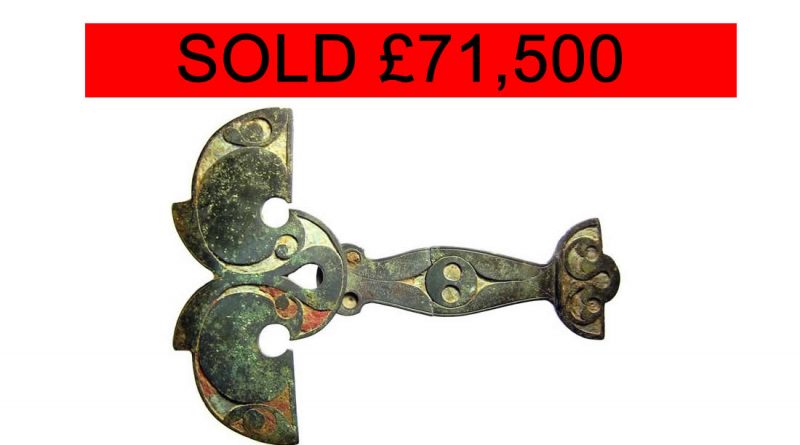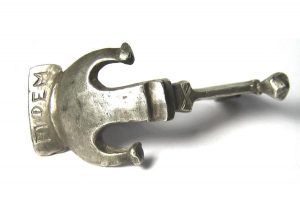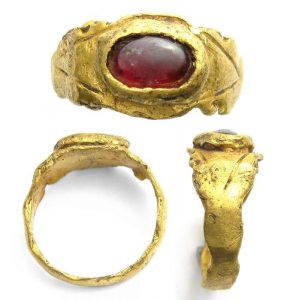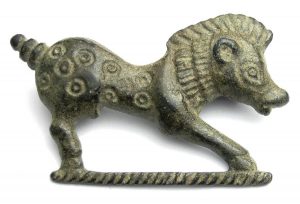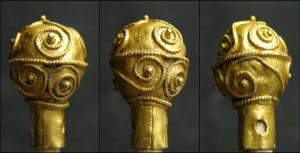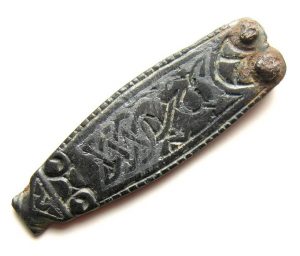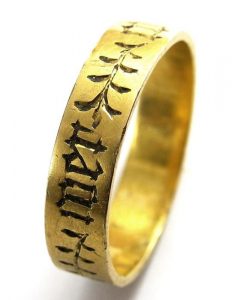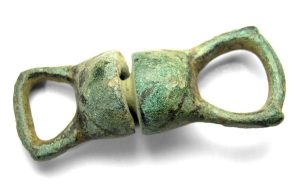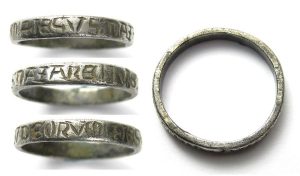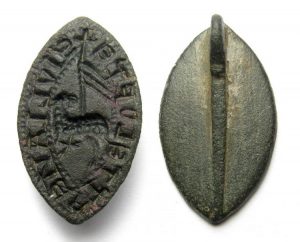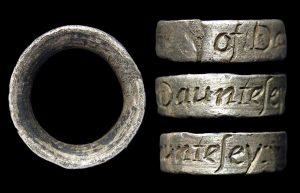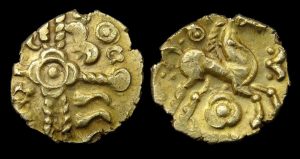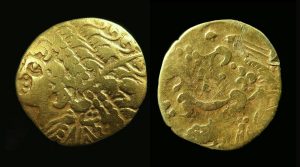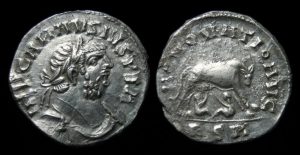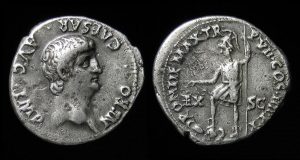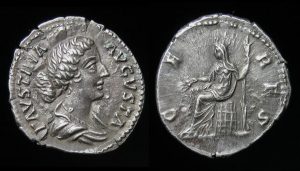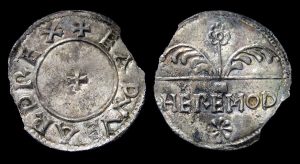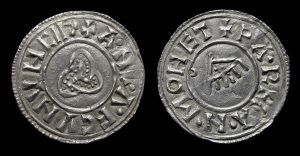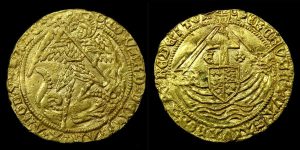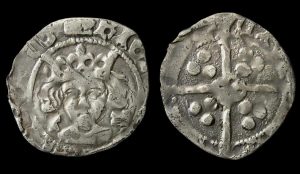Hansons Historica Auction 25 February
Hansons 2 day historica
Hansons held a 2 day historica auction beginning on 25 February. These lots from day 1 included Roman, Celtic, Medieval and Post Medieval coins and artefacts. The auction catalogue is available here.
A couple of the more prominent lots were unsold, notably Lot 103, Lowe Family signet ring. However, this was more than made up by the spectacular price achieved by the star of the auction; Lot 1, Celtic Harness Brooch. This achieved a hammer price of £55,000 against a pre sale estimate of £6,000 – £8,000.
Star of the auction
Lot 1, Celtic Harness Brooch
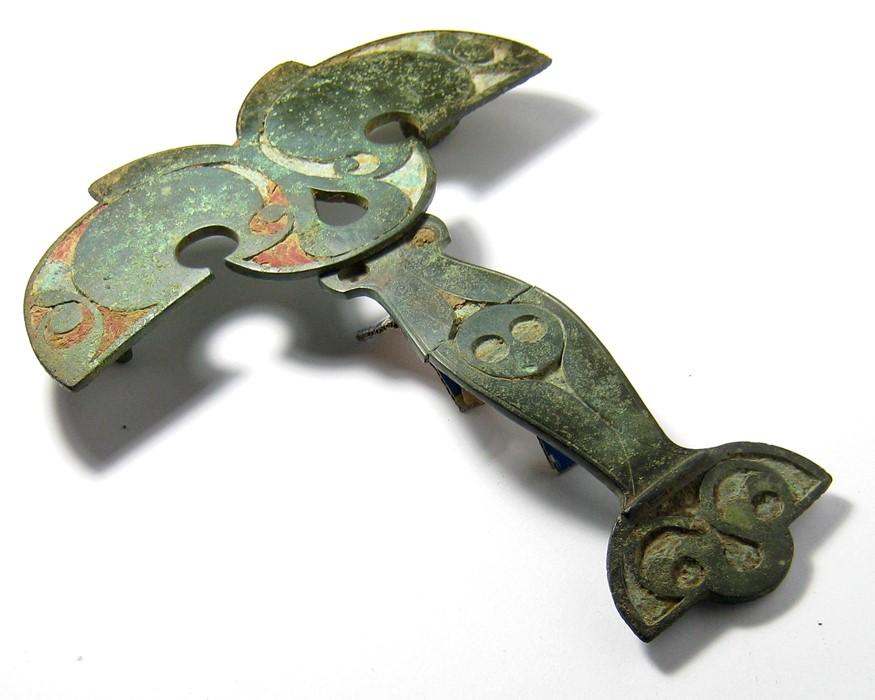
Harness Fitting
This is a late Iron Age enamelled harness brooch. The decoration is in the “South Western Style” with similarities to objects found in the Polden Hill hoard. The auctioneer gave a detailed description of the lot, which is available here.
Detecting Find
The find was made by a detectorist on 17 October 2020 in Buckinghamshire.
It was reported to PAS at DENO-2BAD49, where it was designated as being of National Importance.
Estimate
Estimate: £6,000 – £8,000
Hammer: £55,000
Paid: £71,500 (with buyer’s premium and VAT)
Highlighted Lot
lot 103, Lowe Family 17th Century Gold Signet Ring
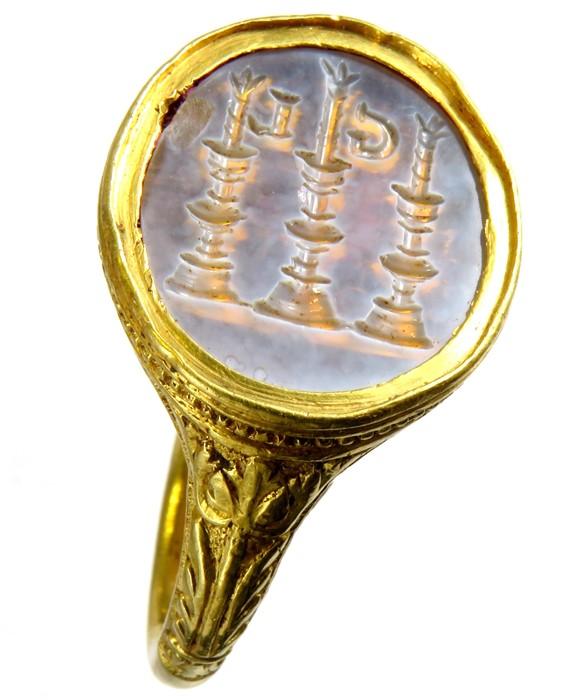
Detecting Find
The ring was found by a detectorist on 24th February 2018 some 150 metres from Casterne Hall in Derbyshire. After getting a strong signal, the detectorist dug down to find a large flat stone. The ring appears to have been deliberately placed underneath. A theory is that the ring was hidden in the late 17th century during a dispute over a will.
The find was reported to PAS at DENO-B87439, declared treasure and disclaimed.
Ring Design
The setting of the seal ring is inscribed with the letters G and L set between three candlesticks. The L is most likely for Lowe as Casterne Hall had been the seat of the Lowe family since being given to them by the king in the 13th century. The G could be for a Geoffrey Lowe who died in 1637.
Ring shape
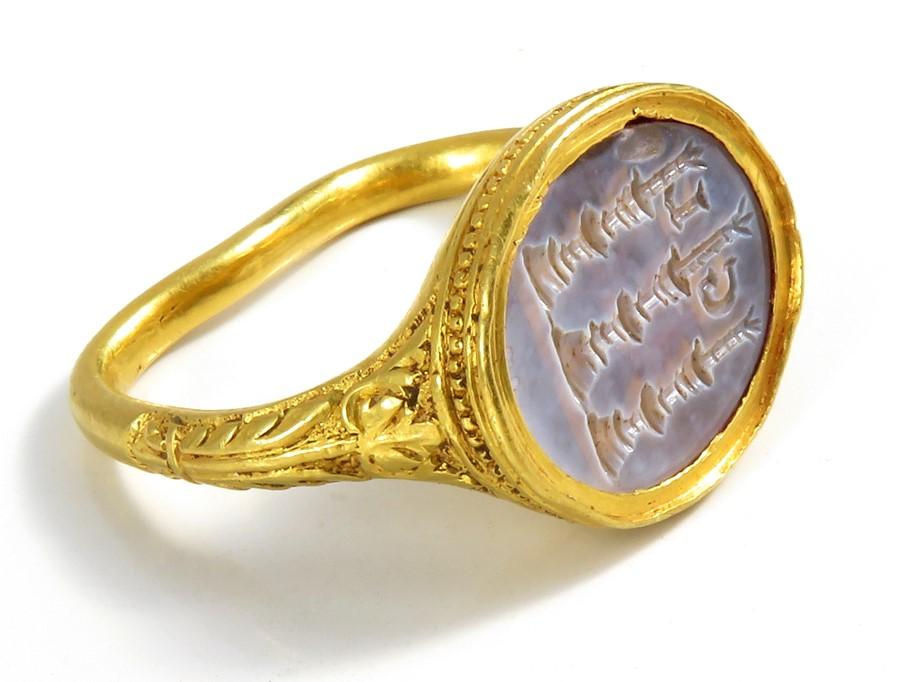
The ring has two bends in it. Given the ring was deliberately placed in a “safe” place and is in good condition, it is unlikely that this is due to damage.
More likely is that it was not intended to be worn for everyday use. Instead its design allows it to be pressed into the wax seal with two fingers.
Estimate
Estimate: £25,000 – £30,000
Unsold
Selected lots
Below are my picks from the other lots. In addition to the hammer price, there is a Buyer’s Premium of 25% (plus VAT).
All images are © Hansons. Click an image to enlarge
Lot 38, Anglo-Saxon Gold Aestal Terminal
This artefact was found in 1992 and therefore falls under the Treasure Trove rules rather than the 1996 Treasure Act. As it was considered to be an accidental loss, it did not qualify as treasure.
It is recorded at PAS as SWYOR-E37B83.
The exact function of this terminal is unknown.
Estimate: £2,000 – £2,500
Unsold
Lot 63, Medieval Gold Posy Ring
A detecting find from 2017 in Winterborne St Martin, West Dorset. It is recorded at PAS as DOR-E2EFC9. It was disclaimed as treasure.
The inscription reads: ioer corps et vye, “enjoy body and life“
Estimate: £3,000 – £4,000
Hammer: £3,500
Lot 106, Silver Hawking Vervel
lot 138, Gallo-Belgic Gold Stater
Bellovaci, c.175 – 80 BC
Obverse: draped bust of Apollo left with elaborate hairstyle. Reverse: Left facing stylised horse with flower below
The Bellovaci were a Belgic tribe based in the North West of France and at times would recruit mercenaries from Britain. These come as detecting finds in the southern counties of England.
Estimate: £2,500 – £3,000
Hammer: £2,300
Lot 155, Carausius Denarius
Found by a detectorist at Risley, Derbyshire on 30 July 2020 and recorded at PAS as DENO-7EB4B2. It is the only known specimen with the obverse legend IMP CARAVSIVS P F A and only the third with the reverse legend RENOVATIO AVG.
This is the second Carausius Denarius of note, both recent detecting finds, that is being auctioned this week. See my review of the Spink Numismatic e-Circular 7 Part I
Estimate: £2,500 – £3,000
Hammer: £5,000
Lot 213, Anlaf Sihtricsson "Raven Banner" Penny
The “Raven Banner” Penny is a coin of the Norse-Gael Olaf Sihtricson (Anlaf Sihtricsson)
The obverse has a Triquetra surrounded by the legend: ANLAF CVNVNC II
CVNVNC is the Old Norse word Konungr, meaning King, written in the Latin alphabet. As such, it is one of the earliest surviving texts of Old Norse in the Latin alphabet
The reverse has a raven banner surrounded by: FARMAN MONET meaning moneyer Farman
Extremely rare
Estimate: £3,000 – £4,000
Hammer: £4,500

